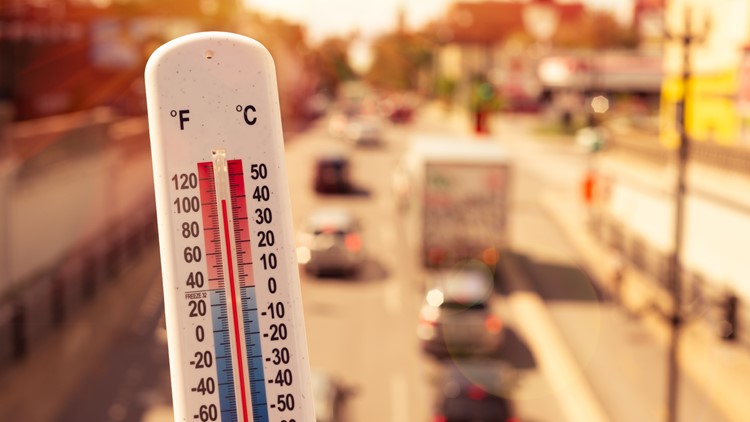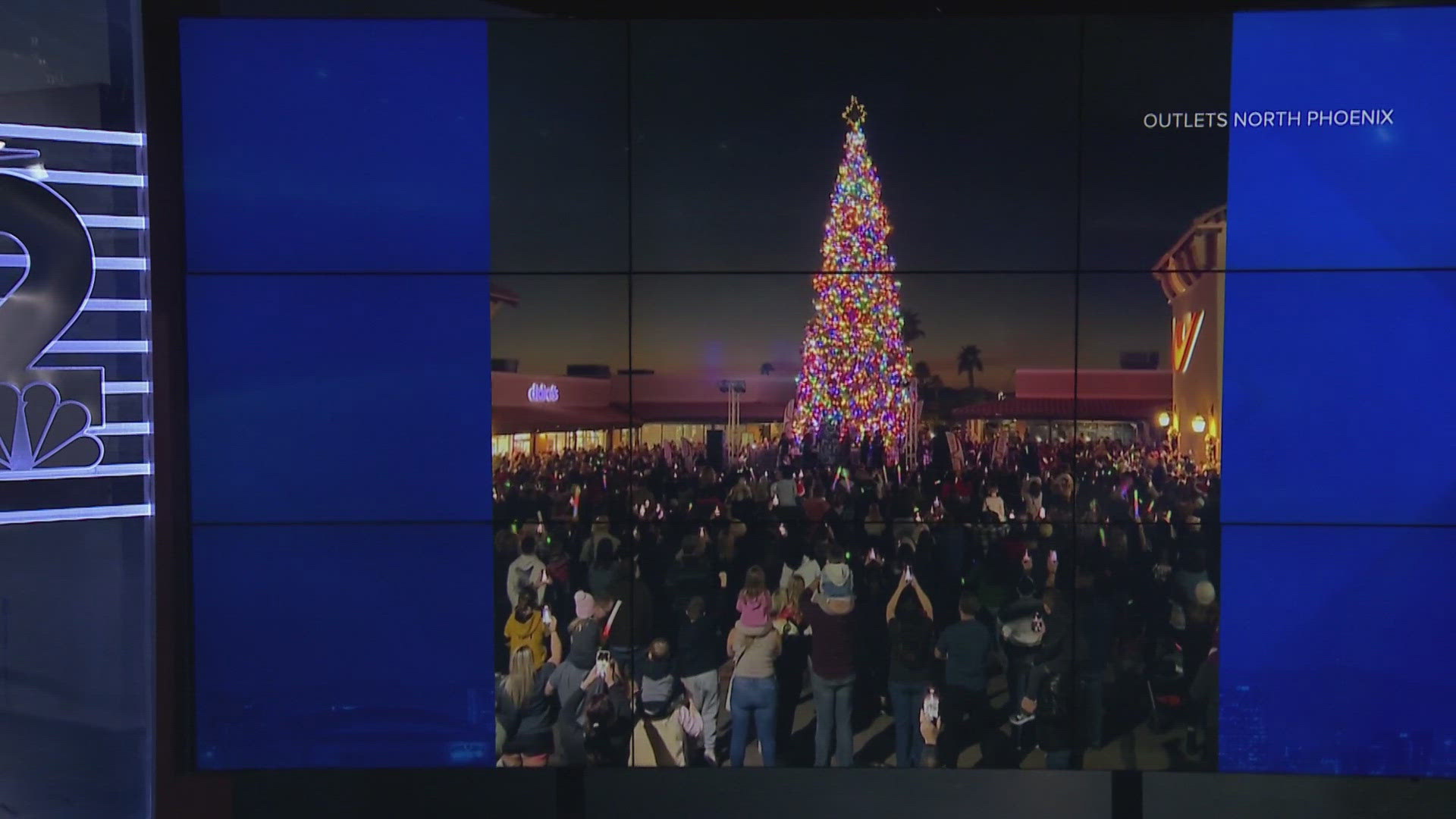PHOENIX — It's coming, Arizona: Triple-digit heat is back and it is here to stay.
The days of cool mornings and low 70s are quickly becoming a thing of the past as State 48 gears up for summer. We're not hitting triple-digit highs just yet, but it will be here sooner than you think. How can you prepare? Here are some of the top tips.
Hydrate, hydrate, hydrate
Drinking water when you live in a desert — seems obvious, right? But knowing just how much water to drink can be tricky. Too much and you risk water poisoning, too little and you could end up dehydrated. So, how do you find the goldilocks just right amount?
According to guide from Maricopa County, once you are thirsty or sweating, you are already dehydrated, so it is best to drink water even when you don't feel thirsty. The Arizona Department of Health Services recommends avoiding alcohol, as it can be dehydrating, and drinking at least two liters of water each day.
But if you have chronic illnesses or are older, the need to be conscientious of your water intake increases, according to Regional Medical Director of Oak Street Health Dr. Patrick Vinck said.
Certain medications can be dehydrating and as the body ages, it's ability to retain water changes, Vinck said.
"In Arizona in particular, it's important for us to stay ahead of it," Vinck said. "The summer heat can catch up to us so quickly."
And if you aren't a big fan good ole H2O, Vinck said you can add in lemon slices or electrolytes. But be careful: some additives can be dehydrating and tea, coffee or other beverages is not a substitute for water.
Dress for the weather
Summer heat brings out bathing suits, shorts, tank tops and sandals. But in Arizona, the idea of "less is more" doesn't apply to clothing, even in the 117-degree heat.
If you are able to wear lightweight long sleeves or pants, the long layers can help keep your skin safe from powerful UV rays. But if it is too hot for long clothes, the ADHS recommends at the very least wearing a hat, using an umbrella and always applying sunscreen to exposed skin.
The UV index provides a daily forecast of the intensity of the sun's ultraviolet radiation. Cloud cover and the time of year impact the sun's intensity. While some sunlight exposure is good, too much can be dangerous.
In Arizona, we typically see the highest UV index from April through September. The sun's UV radiation is the strongest during the month of June, when the state averages a UV index of 11+ (burn time less than 10 minutes); this is when the sun angle is the highest in the sky and the more direct UV radiation.
In a previous interview with 12News, Dr. Miguel Gonzalez-Velez, a doctor at Dignity Health Center Cancer Institute at St. Joseph's Hospital and Medical Center, said Arizonans must keep sun safety top of mind since there isn't much cloud cover and we don't have as much wind compared to the coasts.
"Arizona is the state that has the most UV light exposure compared to any other state... which is the main contributor to melanoma and other skin cancers," Gonzalez-Velez said.
One area you might not think of when it comes to sunscreen? Your head! Especially if you have short or no hair, your head needs protection from the sun's powerful rays.
Keep your car safe
Inside your car, it can get extremely hot very fast. Even though the temperature may only be 90° outside, temperatures inside your car can rise to well over 100° in a matter of minutes.
That's why you should never keep children or pets in the car during the summer months — and best practice is not to leave them in a car at all. Even with the windows down, parking in the shade or a sun visor, it is still too hot to keep someone in a car, ADHS said.
Your car also measures heat differently than your classic thermometer. Your car displays a temperature measured by a thermistor. This is a device that measures heat radiated from surfaces around the sensor. A calibrated instrument, a mercury thermometer, determines our official high temperature for the day.
To drive this home for you, imagine walking on a sun-baked asphalt surface versus a grass surface. The asphalt is much warmer because darker surfaces absorb more solar radiation than grassy or shaded areas.
Heat stroke versus heat exhaustion
Maricopa County's guide recommends staying indoors during peak heat times and engaging in outdoor activities with a plan: go early, drink water often and know your limits. One of the limits you need to know? What the difference is between heat stroke and heat exhaustion.
Heat exhaustion can cause dizziness, excessive sweating, nausea/vomiting and/or cool and clammy, pale skin.
Heat stroke is much more serious. Signs include severe headache, confusion and a change in behavior. The body also stops sweating and will feel hot to the touch (heat stroke can present itself when the body reaches at least 103 degrees). If the person is in an altered state, don't give them water, instead call 911 to get help on the way.
If you are out and about and you start to feel any of the symptoms above, head to one of several cooling stations in Maricopa County. You can find a list of them here.
Water safety
The triple digits often drive people to stay indoors or enjoy time in the water. If you are inclined to lounge by the pool, make sure you know how to keep yourself and others around you safe.
12News teamed up with meteorologist Dave Munsey for a Water Watch campaign, which includes many articles all about how to keep yourself and others, especially children, around water.
Here are a few articles that tackle water safety head-on:
- ‘Never underestimate the abilities of a baby’: Swimming lessons for infants may be the key to help stop drownings
- Every fatal child drowning in Arizona was preventable, report finds. Here's what experts say can be done.
- Indoor water safety tips: What you need to know
- Water Safety: Everything you need to know
Watch 12News+ for free
You can now watch 12News content anytime, anywhere thanks to the 12News+ app!
The free 12News+ app from 12News lets users stream live events — including daily newscasts like "Today in AZ" and "12 News" and our daily lifestyle program, "Arizona Midday"—on Roku and Amazon Fire TV.
12News+ showcases live video throughout the day for breaking news, local news, weather and even an occasional moment of Zen showcasing breathtaking sights from across Arizona.
Users can also watch on-demand videos of top stories, local politics, I-Team investigations, Arizona-specific features and vintage videos from the 12News archives.
Roku: Add the channel from the Roku store or by searching for "12 News KPNX."
Amazon Fire TV: Search for "12 News KPNX" to find the free 12News+ app to add to your account, or have the 12News+ app delivered directly to your Amazon Fire TV through Amazon.com or the Amazon app.
Up to Speed
Catch up on the latest news and stories on the 12News YouTube channel. Subscribe today.



